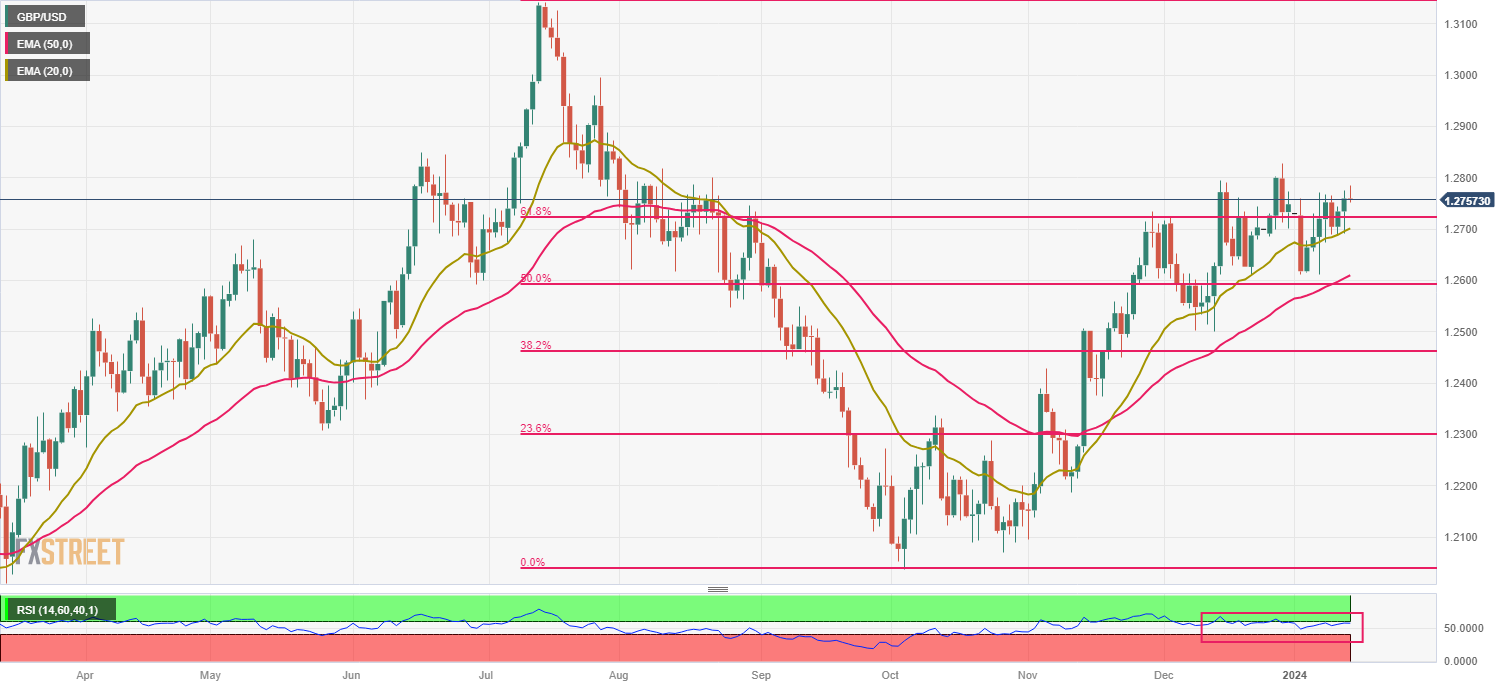The British Pound Sterling (GBP) is experiencing adjustments following the release of November’s mixed factory data by the UK Office for National Statistics (ONS). The manufacturing sector showed a marginal monthly improvement, but the annual figures fell short of expectations. Despite slightly better overall economic data, concerns about a potential technical recession in the UK’s economy persist.
Looking ahead, the performance of the Pound will be heavily influenced by upcoming labor market and inflation data. A cooling labor market and reduced inflation could lead to a more dovish stance on interest rates by the Bank of England (BoE) at its upcoming monetary policy meeting on February 1, 2024.
Currently, the Pound Sterling is seeing a rise in demand due to positive market sentiment. The GBP/USD pair maintains a bullish trend, bolstered by the likelihood of an interest rate cut by the US Federal Reserve, despite persistently high US Consumer Price Index (CPI) figures for December.
Market Update: The Pound Sterling has lost its earlier gains following the UK ONS’s report of mixed November factory data. Monthly Manufacturing Production increased by 0.4%, slightly more than the 0.3% expected, rebounding from a 1.2% drop in October. Year-over-year, the growth was 1.3%, less than the anticipated 1.7%, but still a significant improvement from the previous 0.2%. Industrial Production also saw a monthly increase of 0.3%, in line with expectations, but year-over-year figures unexpectedly fell by 0.1%. The UK’s monthly GDP growth exceeded expectations at 0.3%, indicating a recovery from a 0.3% contraction in October. However, this data does not alleviate concerns about a possible technical recession in the UK.
The BoE faces a challenging decision between addressing high inflation and a fragile economic outlook. While no official statements about rate cuts have been made, investors anticipate the BoE might reduce borrowing costs to avoid negative consequences of excessive tightening.
Next week’s labor and inflation data will be crucial for the Pound, setting the tone for the BoE’s February policy meeting. The UK labor market is slowing, with a 32% decrease in job vacancies compared to last year. The demand for risk-sensitive assets is high, while the US Dollar Index struggles, unable to gain from high inflation data amid expectations of a Fed rate cut.
In today’s trading, the US Dollar Index will react to the US Producer Price Index (PPI) data for December, scheduled for release at 13:30 GMT.
Technical Analysis: The Pound Sterling has retreated from a two-week high near 1.2790 following the UK factory data release. The GBP/USD pair remains generally favored, supported by rising 20 and 50-day Exponential Moving Averages (EMAs). The pair is trying to stay above the 61.8% Fibonacci retracement level at 1.2710. The 14-period Relative Strength Index (RSI) is nearing 60.00, indicating potential bullish momentum if it crosses this threshold.
Technical Analysis: Pound Sterling drops from 1.2800
